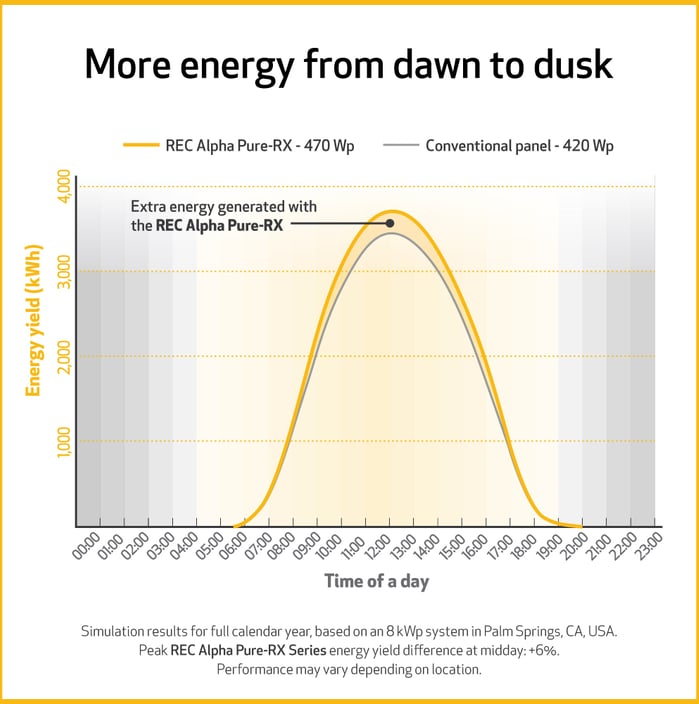Beat the Heat: Maximizing Your Solar Panel Performance in Summer 2025
Discover how summer heat can secretly reduce your solar panel efficiency and learn proven strategies to maximize performance in 2025. From advanced cooling technology in Zhores panels to smart installation options, this guide reveals how to get more energy from your solar investment when temperatures soar.
etag
5/6/2025
Summer is just around the corner, bringing those long, sunny days perfect for solar production. But there's a catch that many solar system owners don't realize – high temperatures can significantly reduce your solar panels' performance, cutting into those energy savings you've worked so hard to achieve.
How Temperature Affects Solar Panel Performance
Solar panels, like most electrical equipment, experience decreased efficiency as temperatures rise. This performance drop is measured by what's called a "temperature coefficient" – the percentage of power production lost for each degree Celsius above the ideal operating temperature (which is 25°C or 77°F under standard test conditions).
It's important to understand that solar panels are rated under two different conditions:
STC (Standard Test Conditions): These are perfect laboratory conditions where sunlight hits the panels at a perpendicular angle and temperature is maintained at that ideal 25°C.
NMOT (Normal Module Operating Temperature): This is a more realistic approximation of real-world conditions, accounting for higher temperatures and less-than-ideal sunlight angles.
The reality is that your rooftop solar installation rarely operates under those ideal STC conditions. During summer months, especially in southern states like Arizona, Texas, Florida, or even mid-Atlantic regions like Virginia and North Carolina, rooftop temperatures can soar to a scorching 150-160°F (65-71°C) or more. These extreme temperatures can seriously impact your solar production if you haven't planned accordingly.
Solutions to Beat the Heat in 2025
1. Choose Solar Panels with Advanced Cooling Technology
One of the most effective ways to combat heat-related efficiency loss is to select solar panels designed specifically for high-temperature performance. The innovative Zhores solar panels feature a unique cooling system that actively reduces operating temperatures, resulting in significantly improved performance during hot summer days. Their proprietary cooling technology allows heat to dissipate more effectively than traditional panels, maintaining higher efficiency even when rooftop temperatures climb to extreme levels.
2. Consider Heterojunction Technology
Another excellent option is to install solar panels that utilize heterojunction technology (HJT). These panels combine amorphous silicon (thin-film) with crystalline silicon to create higher-efficiency cells with notably lower temperature coefficients.
The REC Alpha Pure RX modules are a prime example of this technology in action. With their industry-leading low temperature coefficient and special horizontal supports, these panels maintain performance close to peak power even in extreme weather conditions. They also offer an impressively low degradation rate while remaining competitively priced.
3. Explore Ground-Mounting Options
If your property allows for it, ground-mounted solar panels can provide significant performance advantages during summer months. Ambient temperatures at ground level are typically much cooler than on rooftops, allowing for better natural cooling of your panels.
While ground-mounted systems often cost more initially (as they require building structural support from scratch rather than utilizing existing roof structures), they can deliver better long-term performance through improved cooling and airflow. With open air circulation around and under the panels, cells can cool more effectively, potentially providing greater total energy harvest over the system's lifetime.
Looking Beyond Wattage: Total Energy Harvest
When evaluating solar panel options, many homeowners focus exclusively on the wattage rating. However, this number only represents instantaneous maximum power under perfect conditions – not the actual energy savings you'll see over time.
The questions you should really be asking are:
How much total energy will my system produce over its lifetime?
What will my energy production be in year one?
How will factors like temperature coefficient and degradation rate affect my long-term output?
Standard solar panels might lose about 0.5% of their rated power each year due to degradation, typically guaranteeing 80-85% of initial power output by year 25. Premium options like the REC Alpha Pure RX mentioned earlier or the advanced Zhores cooling panels have significantly lower degradation rates – around 0.25% annually – ensuring at least 92% of initial rated power by year 25.
This difference in degradation rate, combined with superior heat management, translates to substantially more total energy harvested over your system's lifetime – which directly impacts your return on investment.
Making the Smart Choice for Summer 2025
As we approach summer 2025, homeowners looking to maximize their solar investment should prioritize panels with:
Low temperature coefficients
Advanced cooling technology (like Zhores panels)
Low annual degradation rates
High efficiency in real-world conditions
hether you're considering a new installation or wondering why your existing system underperforms during hot months, understanding how temperature affects solar production is crucial to making informed decisions.
For homeowners in high-temperature regions, the small premium paid for advanced cooling technology like that found in Zhores panels or heterojunction cells in REC modules can deliver significant returns through improved summer performance and greater lifetime energy production.
Ready to optimize your solar system for maximum summer performance? Contact our team of solar experts today for a free consultation on the best heat-resistant solar solutions for your specific location and energy needs.



